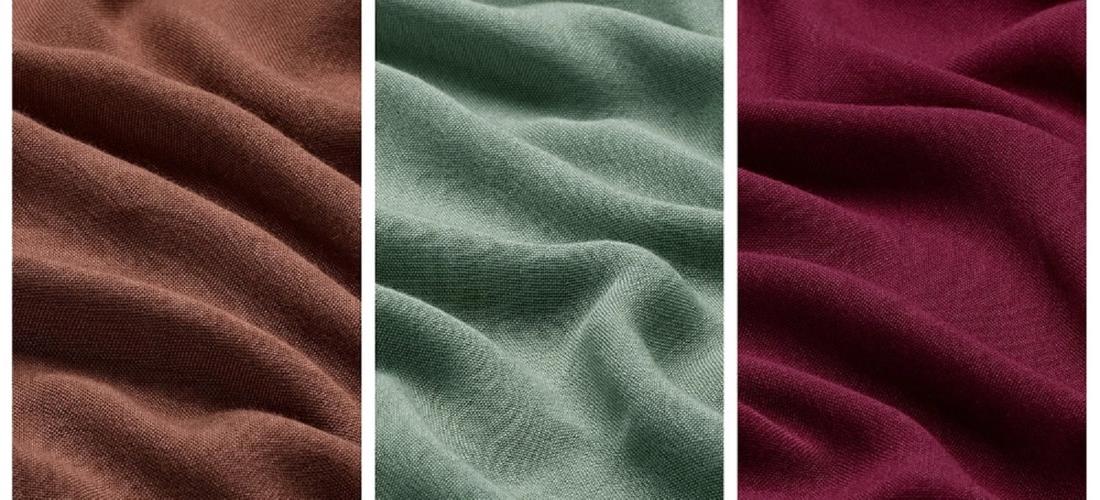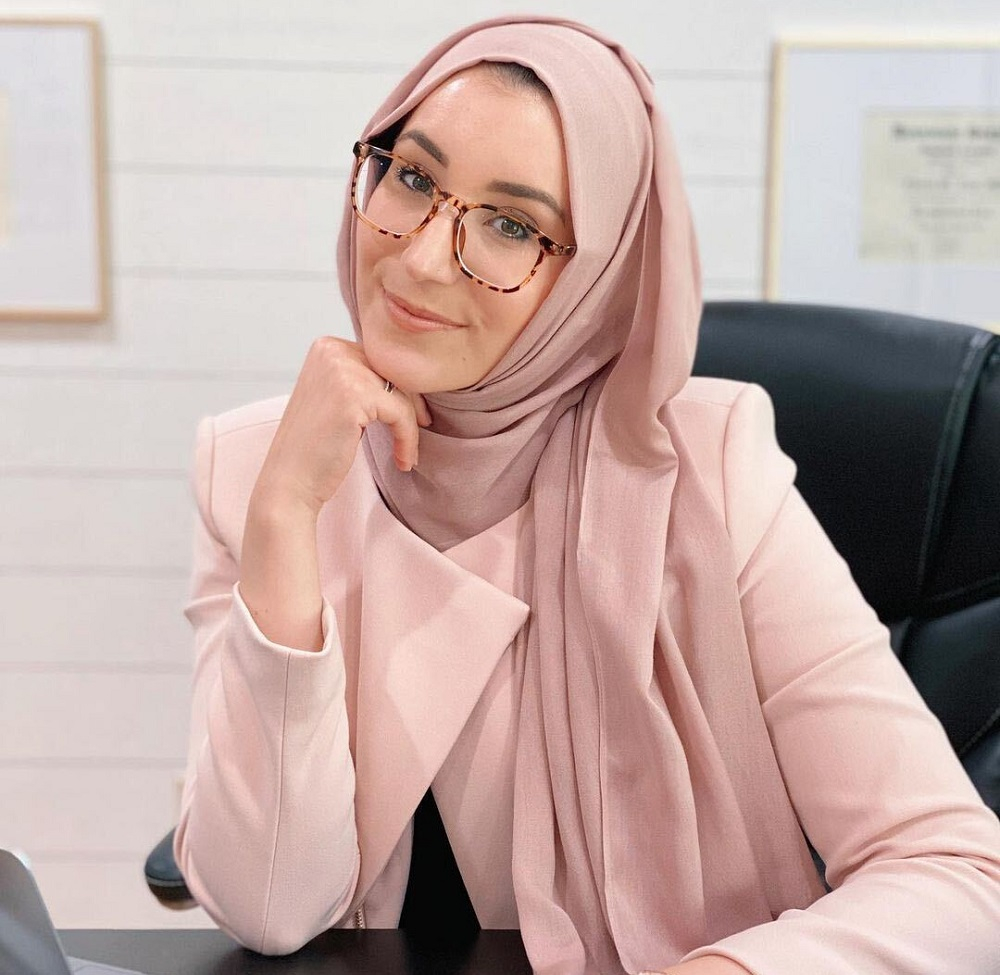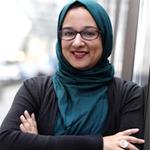What Makes Our Bamboo Wovens More Sustainable? Let's Dig into the Science!
Fashion
|
Oct 15, 2020
|
5 MIN READ

Our Bamboo Wovens (L-R) in Chestnut, Sage and Currant
While sustainability is not a new concept for Haute Hijab, our commitment to making sure new products (like our recently-launched Haute Hijab Sport and our Ultimate Underscarves before that) are created more sustainably with more eco-friendly fabrics isn’t just reserved for new collections. We are revisiting existing hijab lines as well to see what can be produced more sustainably.
With this in mind, we delved deep into the world of woven fabrics, drawing on our own learning and experience of using bamboo for our Ultimate Underscarves, studying the bamboo plant further and drawing on research by companies like Patagonia to understand how it performs, why it’s a better, natural plant to work with and how to make a fabric out of it that had a more gentle impact on the environment. This is how our Bamboo Wovens came to be.
Why Bamboo?
Bamboo as a plant and fiber has several unique and superior characteristics as touted by many in the fashion industry, including breathability, moisture wicking and anti-bacterial properties. However, upon further study of several scientific studies, what bamboo actually does in regards to these characteristics is perform more effectively than cotton or polyester in transferring heat away from the face and head.
And why is this? Allow us to get a little science-y. :) Bamboo has an interesting “pentahedral” or “floral” shape and strong fibers, which seem to contribute to these properties. When compared with cotton, it wicks moisture away more effectively. It also has better UV protection than similar weight cotton jersey material, and many bamboo and bamboo viscose fabrics are successfully certified as UPF 50. It also is shown to collect significantly fewer bacteria than cotton fabric when left out in the same conditions.
Why is this? From our understanding of the research, the floral shape of the bamboo fiber creates a “superior tensile strength and coverage,” and the shape of the fiber and gaps around its exterior create a space in the thread that seems to make it easier to absorb moisture and allow heat to escape the surface of the skin.
So that’s solid plus for using bamboo as a fiber to create our Woven hijabs.
As a raw material, bamboo renews itself extremely quickly – it grows up to four feet a day! – so it easily outperforms other plant-based fibers like cotton (which demands a lot of water and land to grow) and rayon (which is made from wood pulp from slower-growing trees). But, turning the bamboo stalk into a fiber for fabric is where things get more complicated.

All too often the most common method of processing bamboo to create a woven material is through a harmful chemical process. Essentially, the process involves dissolving the bamboo stalk in a strong chemical solvent to produce a thicker viscous solution, which is then forced through a spinnet into a “quenching solution” where the strands solidify into a fiber. The solvents used are toxic and can cause air pollution and contaminated wastewater. This is what we were striving to move away from in searching for a new, more eco-friendly process and plant fiber to create our new Woven hijabs.
A lot of progress has been made in the fabric manufacturing industry to patent processes that either use different, milder chemicals or “close the loop” processes so that chemicals used are recycled for more production rather than being dumped into the surrounding environment. These improvements have made the production of certain types of rayon, viscose and bamboo fabrics more safe and sustainable for the environment as well as for those doing this work and those who live nearby.
Our bamboo hijabs are made with fibers that have been mechanically, rather than chemically processed. Mechanically processed bamboo is distinct because, unlike standard viscose production, it does not use any chemical solvents to extract the fiber. The result is softer on the environment, softer on manufacturing partners and their communities, and softer on you. (You can also read more about our ongoing sustainability efforts here.)
How do we make a product more sustainable?
Fully eradicating harmful chemicals and components in the process of making fabrics is something that will take time. Companies like ours are on the path to becoming more sustainable by partnering with manufacturing companies that prioritize using certified sustainable fabrics and dyes with fewer chemicals, perhaps mechanical processes, a smaller carbon footprint and the aforementioned “close the loop” processes.
Ultimately, how does one declare that a product is more sustainable? Measuring sustainability factors is complicated, especially with segmented supply chains ( the process by which a plant becomes a fiber, which becomes a material, which becomes a product, which then is purchased by you as the consumer) spread all over the world. This is why certifications are so important. The most common and reputable certifications typically used for bamboo fabrics are Oeko-Tex Standard 100 and GOTS (Global Organic Textile Standard).
In the search for our new Wovens fabric, our product team conducted research, went to textile fairs and met with suppliers for nearly a year, trying to find something with a soft feel that was breathable, airy, durable but also more sustainable. Says our Product Development Manager Lily Steele, “We tried a lot of rayon iterations made in a more sustainable way, and that seemed like that was going to be the best option.
“But then we met with a company whose mill was really cool because they specialize in blended and regenerative fibers,” says Lily. “They take fiber waste and figure out how to blend this waste matter together to make new fabrics. The owner is familiar with hijab and just really understood how important the fiber and wearability is [for our Wovens].”

@dermydoc wearing our Bamboo Woven in Dusty Lavender.
While our Bamboo Wovens are not certified by Oeko-Tex or GOTS (or others), it’s because our supplier is a smaller artisan that is holistically sustainable but not big enough yet to pursue certification of their production practices.
It’s also important to note that the Bamboo Wovens are made from a material that is different from the bamboo of our Ultimate Underscarves, which can claim moisture wicking, UV protection and more. The beauty of our Wovens is the sustainable way in which it is produced as well as its superior quality, breathability of the weave and soft wearability.
Finally, after the long search, the HH product team knew this was the right partner to create our Bamboo Wovens in a way that was less wasteful and more sustainable. We hope this has helped you better understand our process in searching for a new Woven hijab for you and why it was so important to us.
We are committed to our journey of becoming a more sustainable brand. We can’t make any grandiose claims, nor should any company, because the research and work on how to develop more sustainable and eco-friendly materials and products is an ongoing process. But, we pray that we continue to learn the latest research and do our part in being better stewards of our earth.
Subscribe to be the first to know about new product releases, styling ideas and more.
What products are you interested in?

